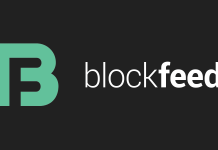Interview with Krzysztof Kolaczynski and Maciej Kolodziejczyk founders of Stable.foundation
What challenge is Stable addressing?
STABLE is a the first project aiming to reduce the inefficiencies existing in digital tokens markets and stabilize them, thus driving their much wider acceptance.
The goal of the project’s team to stabilize the token markets and, at the same time, ensure a relative stability of the STB token value over time. The team expects to deliver the annual volatility (variability) of project’s net assets and therefore STB token price that is much lower (about 5-10 times lower) than that of other major digital tokens such as i.e. Bitcoin, Ethereum, etc.
Cyptocurrencies prices instability is preventing a wider adoption of this vital innovation, as potential new users are deterred by the volatility. Price drops of more than 10% or more in one hour do happen. We want to stabilize the crypto markets.
What is the scale of this challenge?
The more money we raise, the more inefficiencies we will close, which will be stabilizing for the whole cryptocurrency market.
Can you showcase some team members/advisors which have a strong background? What is their connection with this particular project?
All of the people in our team have strong backgrounds – both from financial markets (asset management, banking, hedge fund, algorithmic trading) and programming.
You can find detailed experience of the core team members here: https://stable.foundation/team/
Does Stable have a viable product at this time?
Right after ICO we will hire an auditor to provide opening audit report. After this we should start stabilizing crypto markets, since we already have algorithms and infrastructure ready to act. We should be operationally ready about 1 month after ICO.
What is the structure of the ICO? (Bonuses, Dates, Market Cap)
The crowdfunding phase of the project will take place over 28 days between the 3rd of

September and the 1st of October, 2017. It will take a form of Initial Coin Offering (ICO), wherein Ethereum (ETH) tokens will be exchanged for the newly created STB tokens. The base exchange ratio is set at 10 STB tokens for each ETH token. Early participants in the crowdfunding exchange will enjoy a premium of 6% during the first 7 days, 4% in the second 7-day period and 2% in the third. Crowdfunders exchanging ETH for STB in the final quarter of the ICO phase will be subjected to the base exchange ratio of 10 STB/ETH.
What are the requirements to participate in the ICO?
ICO must be paid by ETH only.
What are the pros and cons for the token holders?
Pros: low price variability of the Stable (STB) token, much smaller STB token drawdowns (interim losses) vs major cryptocurrencies, low price correlation of the STB token vs. broad cryptocurrency market. In case of the STABLE project there will be NO „development fund” or „reserve fund”, etc. 100% of the ETH raised during the ICO will be exchanged for the STB tokens and will be used for stabilizing the token markets and various exchanges throughout the world.
Cons: we will not promise +100% gains in a single year .
Is there a cap on the ICO?
No. The more ETH we will raise the more inefficiencies we will be closing for the whole crypto community.
The objective of Stable is to stabilize the price of Stable coin or of other currencies as well?
We assume that after the setup phase, 95+% of trades will be in currencies other than STB. We will only trade in the STB token, when it deviates substantially from its Net Asset Value.
Is stable an arbitrage project similar to Rialto?
There are some similarities between Rialto and Stable. However, of the 6-7 strategies that we will use, we judge that only our price difference arbitrage strategy is similar to what Rialto seems to be intending to do.
There are, however, numerous differences between our projects:
– they reserve 25% of funds as development fund. We take 0%. We have our ideas developed and tested in the crypto markets.
– There’s no information as to how their team will fund itself on the going basis. This creates disincentive to support the project beyond the launch phase. We charge 2.5% on the value of assets ongoing (to cover the operating expenses) and 20% of increase in asset value (to incentivize our project team to deliver results for many years to come),
– They seem to be very skilled team of data scientists, statisticians, data mining experts (as per the first 5 bios), but they do not seem to have experience with managing money, let alone other people’s money. Myself and Krzysztof have 20 and 15 years experience in the financial industry, we started 2 hedge funds, currently manage several hedge funds and mutual funds with hundreds of millions of dollars in Assets Under Management. We operate in fully regulated environments. As to cryptocurrencies, we have 6+ years in expertise in investing and trading (since June 2011).
– as indicated earlier, two big groups of strategies that we will do (volatility selling strategies and time-value-of money related strategies) are missing from the description of activities they intend to do – as per their whitepaper.

How will the coin sustain itself in the long term, what happens if the price of the coin keeps falling and the reserves are exhausted?
We will repurchase the STB coin at a certain discount to Net Asset Value. We’d buy sth that is worth 1$ for, say, 90 cents. This way the value of the project per each coin increases (say, to 1.02$), because we’d have earned some money on the transaction. If some investors sell their assets (irrationally) below their true value, the rational investors that stay with the project benefit. Ad absurdum – if ALL of the investors start to sell, the net asset value per one coin will progressively approach infinity.
In conclusion:
1) Token’s value will not be flat in value (there is Tether doing this job)
2) The variation of the price will be small compared to other tokens,











